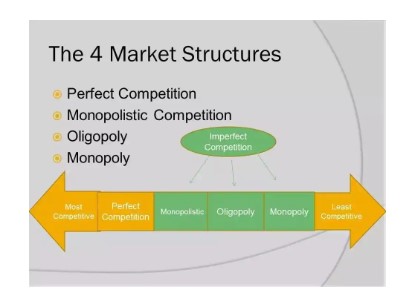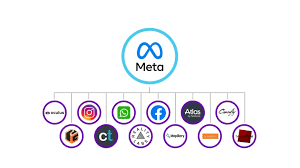Monopoly Mastery: Unveiling the Secrets to Business Dominance
As for monopoly power: “Opportunities multiply as they are seized.” – Sun Tzu, The Art of War
Modern business may be likened to a battlefield & just like in one, achieving dominance/Victory is not merely about competing; it’s about planning and strategy.i.e. strategically positioning your company as the singular authority in its market. This pursuit of monopoly power – where a company becomes the sole or dominant provider of a product or service – is both an art and a science. While monopolies are often seen through a legal lens due to antitrust concerns, the path to establishing dominance can offer businesses unparalleled profitability, market control, and longevity.
To fully appreciate the concept of a monopoly, it’s crucial to first understand the broader landscape of market structures, which shape how businesses operate and compete.

Table of Contents
Understanding Market Structures
Market structures describe the competitive environment in which businesses function. These structures range from perfectly competitive markets to monopolies, with variations in between. Here’s an overview:

1. Perfect Competition:
In a market with perfect competition, all businesses are price takers because there are many little buyers and sellers and no one has a big effect. The rigid presumptions of this market structure—homogeneous products, profit maximization as the only motivation, unfettered market entry and exit, and the absence of consumer preferences—make it primarily theoretical.
- Characteristics: Many small firms, homogeneous products, no control over prices, and free market entry/exit.
- Example: Agricultural markets, where many farmers sell identical crops.
2. Imperfect competition:
- Monopolistic Competition:
This consists of many firms, differentiated products, some price control, and relatively easy market entry.

Example: The fast-food industry, where companies compete through branding and minor product variations.
- Oligopoly:
This consists of Few dominant firms, interdependent decision-making, and significant barriers to entry.
Example: The automobile industry, with major players like Toyota, Ford, and Tesla.
- Monopoly:
In monopoly, a single firm dominates the market, has unique product offerings, significant price control, and high entry barriers.
Example: Utility companies, such as electricity providers in regions where they face no competition.
What Is a Monopoly?
In economics, a monopoly exists when a single company dominates a market with no significant competition. Unlike competitive markets, monopolies enjoy pricing power, control over supply, and significant influence over consumer choice. Companies like Microsoft, Google, and Amazon have demonstrated what it means to strategically maneuver into dominant positions, often reshaping entire industries in the process.
Unlike other market structures, monopolies are marked by their ability to suppress competition entirely. While monopolies can result from innovation, strategic acquisitions and market intelligence, they are often scrutinized due to their potential to stifle market dynamics and exploit consumers.
How Businesses Establish Monopoly Power
To secure monopoly power, businesses employ a combination of strategic, innovative, and sometimes aggressive tactics. These steps have proven effective across various industries.
1. Create Unparalleled Value Through Innovation
The foundation of any monopoly lies in offering a product or service so unique that competitors struggle to replicate its appeal. This often requires substantial investment in research and development (R&D) and a focus on creating groundbreaking solutions.
Example: Apple

Apple’s iPhone revolutionized the smartphone industry, creating a product ecosystem (an entirely new Operating System) that competitors found difficult to penetrate. By consistently innovating and setting premium quality standards, Apple built a loyal customer base that views its products as indispensable.
2. Harness Network Effects
Network effects occur when a product or service becomes more valuable as more people use it. Businesses that harness network effects create a self-reinforcing cycle of growth and loyalty.
- Example: Facebook (Meta)
Facebook leveraged network effects to dominate the social media space. As more users joined the platform, its value to each user increased, making it challenging for competitors to gain traction.

- Example: Microsoft
The widespread adoption of Microsoft Office products created a network effect where businesses and individuals relied on its software, making it the de facto standard for productivity tools e.g Powerpoint, Excel, etc.

3. Build Barriers to Entry
Successful monopolies erect significant barriers to entry, discouraging potential competitors from entering the market. These barriers could be; Intellectual property rights, technological (proprietary algorithms), financial (capital-intensive operations), Control over supply chains or legal (patents and trademarks).
- Case Study: Big Pharma
The pharmaceutical industry including companies like Pfizer through extensive patents on its drugs, ensures that competitors cannot produce generic versions of their drugs until patents expire. This strategy allows for market exclusivity and significant revenue streams.
4. Strategic Mergers and Acquisitions
Acquiring competitors or complementary businesses is a proven strategy for establishing dominance. By consolidating market power, companies can eliminate threats and diversify their portfolios.
- Example: Disney

Disney’s acquisitions of Marvel, ESPN, a 67% stake in Hulu and 21st Century Fox allowed it to dominate the entertainment industry by controlling some of the most valuable intellectual properties in film and media.
5. Exploit Economies of Scale
Achieving economies of scale allows businesses to lower costs as production increases. This cost advantage can lead to pricing strategies that undercut competitors and solidify market dominance.
- Example: Amazon
Amazon’s ability to operate at an immense scale and vast logistics network enables it to offer competitive prices while maintaining profitability, forcing smaller retailers out of the market.
6. Control Distribution Channels
Owning or dominating distribution networks ensures products reach consumers more efficiently than competitors’ offerings.
- Example: Coca-Cola

Coca-Cola’s control over its bottling and distribution network ensures its products are ubiquitous, always available and visible in stores, giving it a significant edge over competitors. In fact it is regarded as one of the world’s most widely distributed products.
Challenges and Ethical Considerations
While achieving monopoly power can lead to market control, it often invites scrutiny from regulators and raises ethical concerns. These include:
- Antitrust Laws
Antitrust laws aim to prevent anti-competitive practices, such as price fixing and market manipulation. Major cases, such as the U.S. government’s actions against Microsoft in the 1990s and the European Commission’s penalties against Google, highlight the risks monopolies face.
- Balancing Innovation and Fair Play
Businesses must ensure that their quest for dominance does not stifle competition, harm consumers, or exploit workers. Responsible monopolies, such as those driven by innovation rather than coercion, are more likely to withstand legal and public scrutiny.
Lessons from Failed Attempts at Dominance
Not all companies aiming for monopoly power succeed. Consider these examples:
- Kodak: Dominated the photography market but failed to adapt to digital technology, losing its position to competitors.
- BlackBerry: Once a leader in smartphones, BlackBerry’s lack of innovation allowed Apple and Samsung to overtake its market share.
Similarly, Nokia’s reluctance to embrace smartphones allowed competitors like Apple and Samsung to take over.
In conclusion, monopoly power is the ultimate prize for businesses seeking unparalleled control, profitability, and market influence. However, the road to dominance requires more than just ambition—it demands innovation, strategic planning, and ethical foresight.
As Sun Tzu suggests, success lies in seizing opportunities and leveraging them to create an unassailable position. In today’s competitive landscape, businesses must balance their quest for dominance with responsibility, ensuring they thrive without compromising fairness or consumer trust.
References
- Sun Tzu. (1910). The Art of War. Translated by Lionel Giles.
- Mankiw, N. G. (2020). Principles of Economics. Principles of Economics, 9th Edition – 9780357038314 – Cengage
- European Commission. “Google Antitrust Cases.” Retrieved from ec.europa.eu.
- Google’s Ads Violate Antitrust Laws, E.U. Says – The New York Times
- U.S. Department of Justice. “Antitrust Case Filings.” Retrieved from justice.gov. Antitrust Case Filings | United States Department of Justice
- Galloway, S. (2017). The Four: The Hidden DNA of Amazon, Apple, Facebook, and Google. The Four: The Hidden DNA of Amazon, Apple, Facebook, and Google: Galloway, Scott: 9780525501220
- OECD. (2019). “Market Power in the Digital Economy.” The Evolving Concept of Market Power in the Digital Economy – Summaries of contributions
- Artificial intelligence : The Key to Gaining a Competitive Edge for Top Businesses







